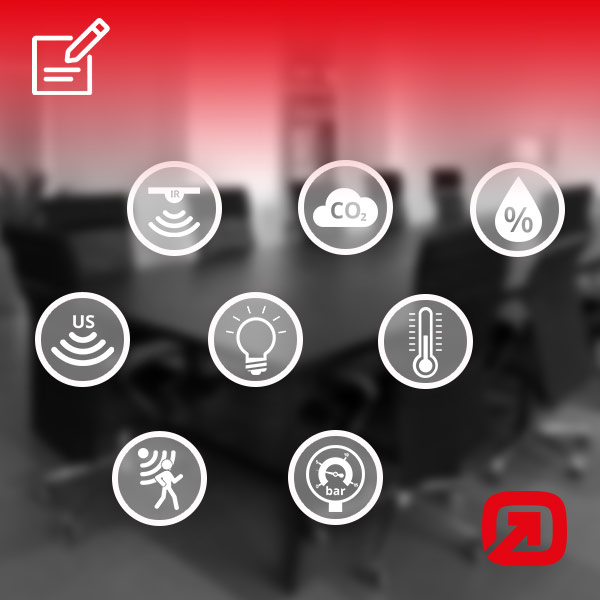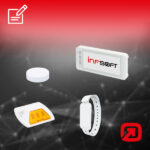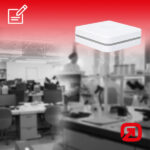The Internet of Things has taken the evolution of sensors to a different level. Smart sensors such as infrared, ultrasound, light, humidity, motion, pressure, air quality etc. are used to capture real-time data which can then be analyzed and made available to improve decision making, traceability, quality assurance and process control.
This blog post aims to provide details of technology and applications of different sensors used in condition monitoring practices.
Continuous monitoring of environmental fluctuations plays a vital role in protecting valuable assets from adverse conditions, vastly improving operations, quality and regulatory compliance and allowing the implementation of predictive maintenance systems.
Condition sensor networks have many applications such as industrial automation, energy management, environmental monitoring, disaster management etc. They are easily integrated for retrofit or mobile/moving components. Sensor information may be directly attributed to an object (through tags or embedded sensors) or may be inferred through the object’s context (for example, the humidity of the warehouse).

Let’s take a look at some of the key sensors, extensively being used in the IoT world:
TEMPERATURE SENSORS
Many processes require specific environment temperature or/and device temperature. Maintaining proper conditions during the storage and transportation of perishable inventory (such as pharmaceutical products or food) is critical for the quality delivery of those goods. Reliable temperature management is essential to guarantee that the product remains in the best possible condition. Temperature control is an effective way of slowing bacterial growth, maintaining quality and minimizing spoilage. Furthermore, temperature sensors have found their way into room automation systems, precisely controlling actuators such as heating and cooling valves or ventilation dampers based on room conditions.
Related use case: Temperature Monitoring of Food
HUMIDITY SENSORS
Relative Humidity (RH) and temperature almost always go hand in hand. For example, fresh products in a low humidity environment might be less susceptible to raised temperature but in a high humidity environment, a raised temperature could have a more significant impact and bring about a faster deterioration.
INFRARED THERMOPILE SENSORS
Infrared sensors are a suitable option for many applications that need to detect surface temperatures and object movements. They work as presence detectors in safety systems, for patient recognition in medical environments or for temperature measurement in industrial process control.
Related use case: Patient Monitoring in a Hospital
ULTRASONIC SENSORS
Ultrasonic sensors work in much the same way as radar and sonar and are used to detect the presence or to measure the distance of people/objects. They can also be used to determine the level of liquid or solid material in closed containers. Ultrasonic sensing devices detect objects regardless of their material, color or surface and are a reliable solution for harsh and demanding conditions.
Related use case: Container Management in Automotive Production
PRESENCE DETECTORS
Presence detectors use infrared to detect the presence or absence of people or an object. It monitors the detection zone for occupancy – if a person is sensed, the detector will automatically trigger an action such as turning the lighting on.
LIGHT SENSORS
Light sensors are electronic devices that indicate the intensity of daylight or artificial light. They have several uses in industrial and everyday consumer applications. For example, they can detect the amount of light in a room and raise / lower the blinds or switch on / off the lights automatically to improve the comfort level in a room.
Related use case: Condition Capturing Sensor Functions in Offices
CO2 SENSORS
CO2 sensors are used to monitor changes of the air quality and detect the presence of carbon dioxide. They are commonly used for monitoring indoor air quality in office buildings, schools, hospitals or smart homes. Moreover, they can be used for real-time monitoring of quality, freshness, and safety of agricultural and food products, since carbon dioxide can be used as a protective gas to prevent the growth of bacteria and fungi.
PRESSURE SENSORS
Barometric pressure sensors measure pressure fluctuations exerted by the atmosphere and play an important role in process and quality control in industrial environments. They are widely applied in systems where a constant monitoring and control of pressures is crucial for operational processes. Their use is ideal for clean rooms, hospitals and computer rooms.
We are yet to see the full potential sensor technologies carries, as the IoT is becoming smarter through the fusion of all the sensors mentioned above. infsoft Sensor Tags fulfill the promise of ubiquitous sensor systems providing situational awareness. They allow the monitoring and logging of temperature, humidity, motion, and other environmental conditions.







